Milan Design Week has evolved from a well-known furniture fair into a reflection of the current design world— encompassing the physical, experiential and philosophical elements. This year, we witnessed many brands curate unforgettable emotional experiences as traditional products took a back seat and in their place visitors immersed themselves on a journey that traveled through the senses, and at times was otherworldly. We also hosted our very own design event at the Fondazione Feltrinelli to discuss the blending of design and business. Cruising through the various exhibits and installations ignited a long-list of trends and observations that we collected throughout our week-long tour.
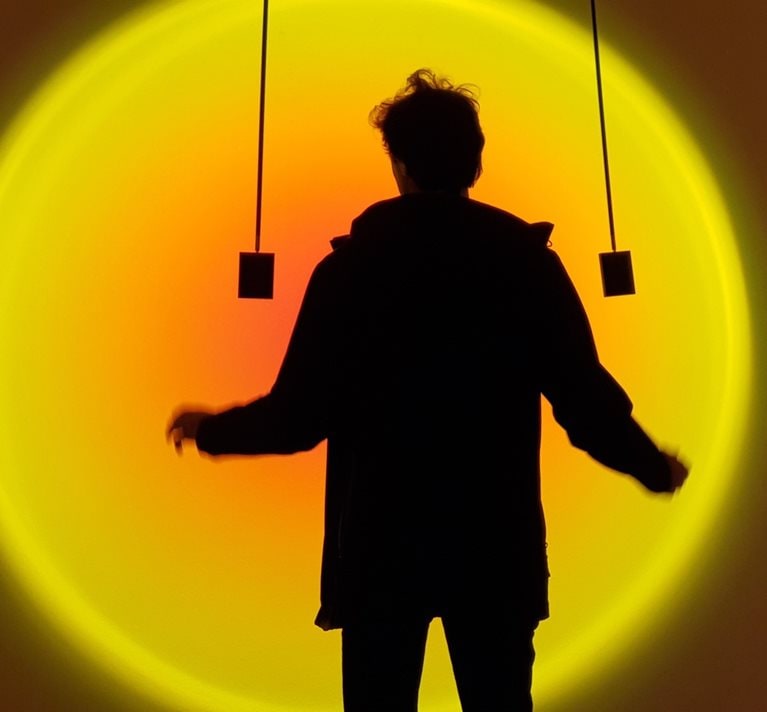
Call to Nature
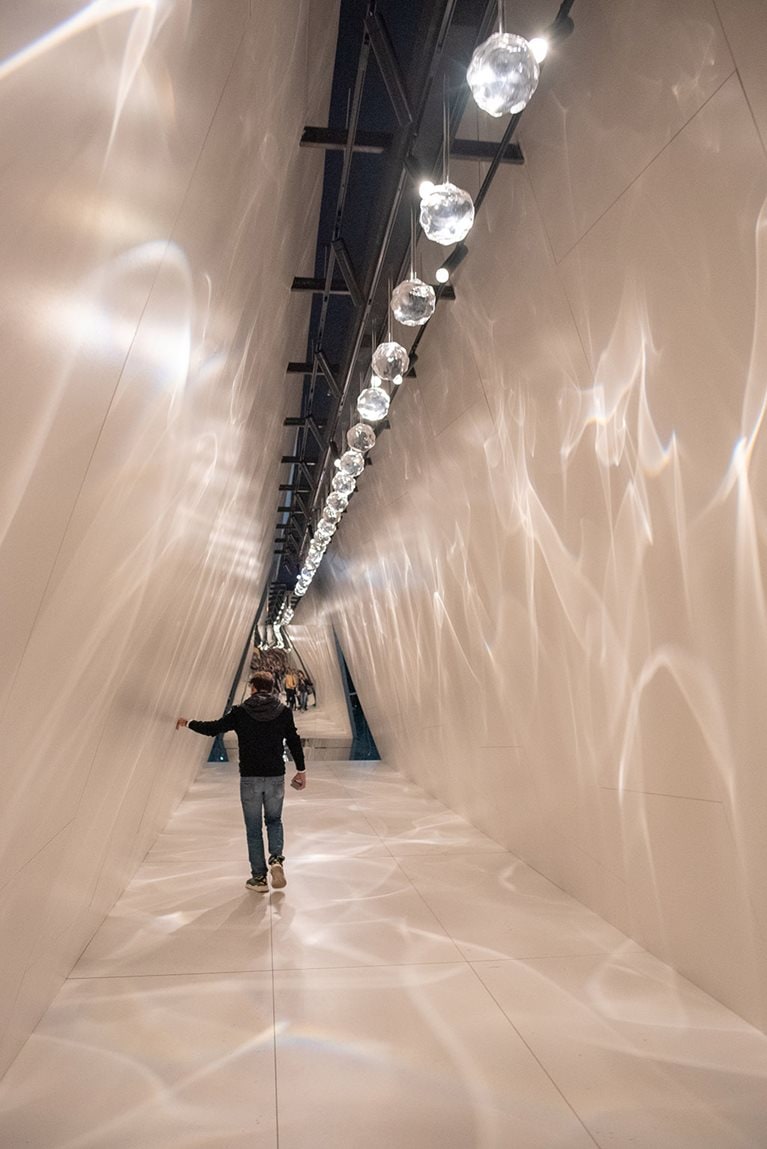
Call to Nature reflects one key principle – humans innate yearning for the wild. It’s an interesting paradox to see that as we become increasingly digital, data-driven beings, we are simultaneously shifting back to nature. While the latest design & technology is on display in Milan, there is a substantial amount of design that is either inspired by nature, directly involves nature, or aims to mend our broken relationship with nature.
Designers and innovators alike are returning to the wild for inspiration in their products and experiences. Over the years, we’ve seen an increasing number of designs heavily inspired by nature. In Warped & Rippled, we see a huge trend in designs that appear to have emerged straight from the hands of Mother Nature herself. Cosentino, in collaboration with designer Benjamin Hubert from LAYER, created an experience in which warped glass light fixtures created a refracted water-like appearance on their environment.
Explorations in Sustainability
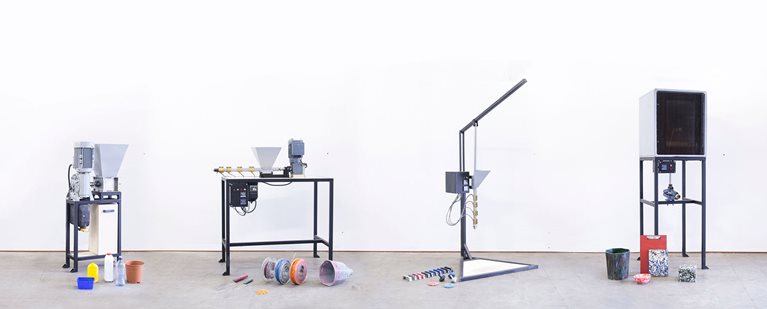
Designers and brands are becoming increasingly aware of the acute impact humans have on our planet, and in turn are seeking to mend this shattered relationship. This year, sustainability wasn’t just en vogue, it took the main stage. Brands exhibited compact electric cars and scooters that aim to be beautiful, modern, and most importantly accessible.
For years, designers have tried to find innovative solutions to improve our footprint, including new materials and aesthetics, new production methods, up-cycling, zero waste management etc. Two of the most popular exhibits include Rossana Orlandi’s, Guiltless Plastic and the exhibition, Broken Nature: Design Takes on Human Survival curated by Paola Antonelli.
In Guiltless Plastic, Rossana Orlandi selected the best and brightest in the fight against plastic pollution. Plastic Prize winners included Alexander Schul, who created three striking pieces of recycled plastic furniture and Dave Hawkins Precious Plastic upcycling machines, which turn plastic waste into reusable filament for 3D-printing. Broken Nature uses restorative design to highlight recycling, over-consumption and upcycling to question the relationship between humans and their environment. The show included shoes made from recycled ocean plastic, fair-trade smartphones, and a wall-to-wall infographic with birthrates, extinctions and war data to further emphasize the impact of humans on the world around us.
While it is a relief that brands are finally taking notice—en masse— to the issues of climate change, pollution, and the ethical implications of human consumption, there is a slice of irony in many of the proposed solutions. Are the consumption of “green goods” as a means to solve the production of “dirty goods" the only answer? While recycling plastic is great, if we use it to produce more plastic we haven’t really solved the issue. We must think of a product’s life cycle, including the materials used to produce it and end its use.
Softened Tech
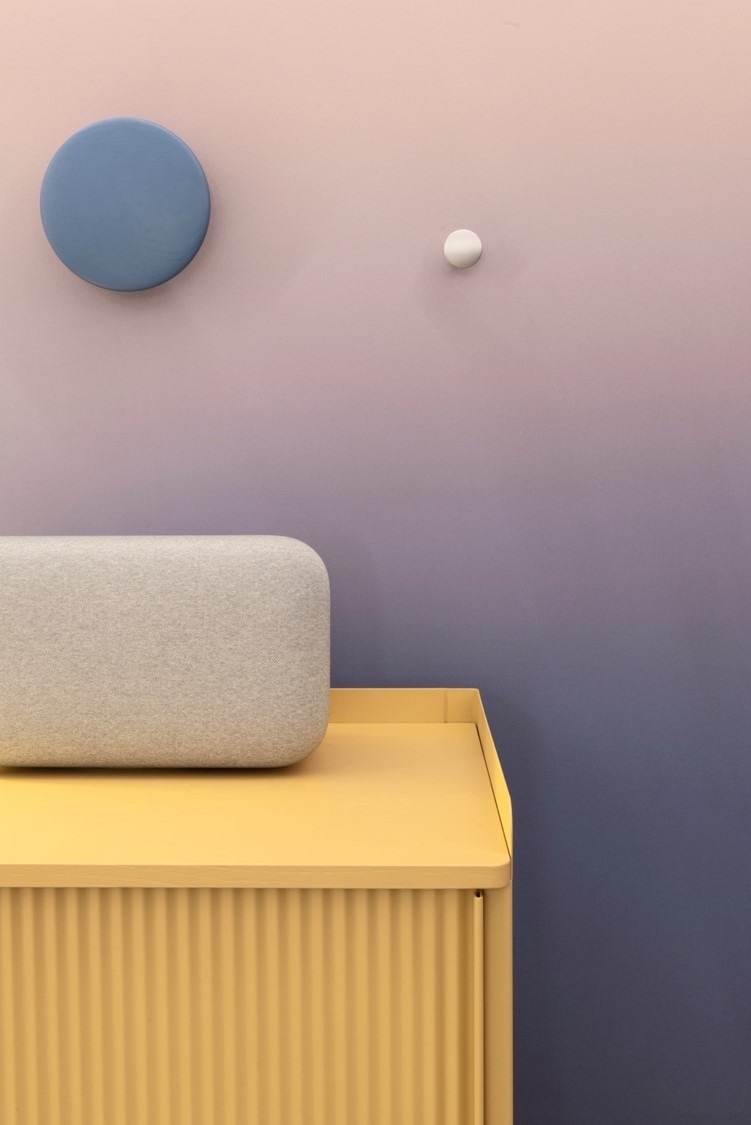
This trend continues to explode as numerous brands explore the tactility of tech, pushing it far beyond gadget-centric devices and into harmonious products and interior objects. We saw a vast array of devices that aimed to become more seamless than their predecessors— transforming TVs, which shape-shifted or vanished when not in use, creating fluidity in their environment and echoing the ebb and flow of daily life. A silver capsuled cellphone slumber pod which enables phone addicts to put their phones to rest, allows users to get a much-needed break from their screens. For too long tech has been bulky and obtrusive. This shift towards more seamless products and experiences is a much-needed display towards humanizing tech.
It’s no revelation that tech is becoming increasingly embedded in the very fabric of our lives. The question is, what’s next? How long will it take for us to become completely deviceless? Devices and products that are seamlessly embedded are inherently convenient, but at what cost does convenience come? You can unlock your phone with your retina, but one must question if they wish to share intimate personal data with digital providers. In the future, every space we inhabit, every vehicle we use, and every product we touch might know us far more intimately than we know ourselves. This is "soft technology." It gently and lovingly invades nearly every human experience, with the promise of being seamless. While there are substantial benefits in harmonious technology (a roll up TV would greatly diversify a compact apartment), do we want everything to be so integrated and blended into the background of our daily lives? Each trend has its pros and cons and it would be naive to view our current design and technology trends as simply “for good.” If they go unchecked and unquestioned, they could take us down unintended paths.
Talking to Me
Not only humans made their way to Milan this April, but also robots and AI. Visitors entered into interactive and immersive worlds with dimmed lights, dark walls, lighting effects and iridescent surfaces. The exhibition, Affinity in Autonomy focused on the relationship between man and robot, building on emotional connections with technology. How might robots enrich our society? In the exhibition, Resonance the interaction between people and object was key. Headlights from a popular car company, invited visitors to a dark theater where a dramatic light show with a symbiotic dance between human, robots and spotlights blurred boundaries between human emotions and machines.
Stay & Play: Sensing Design
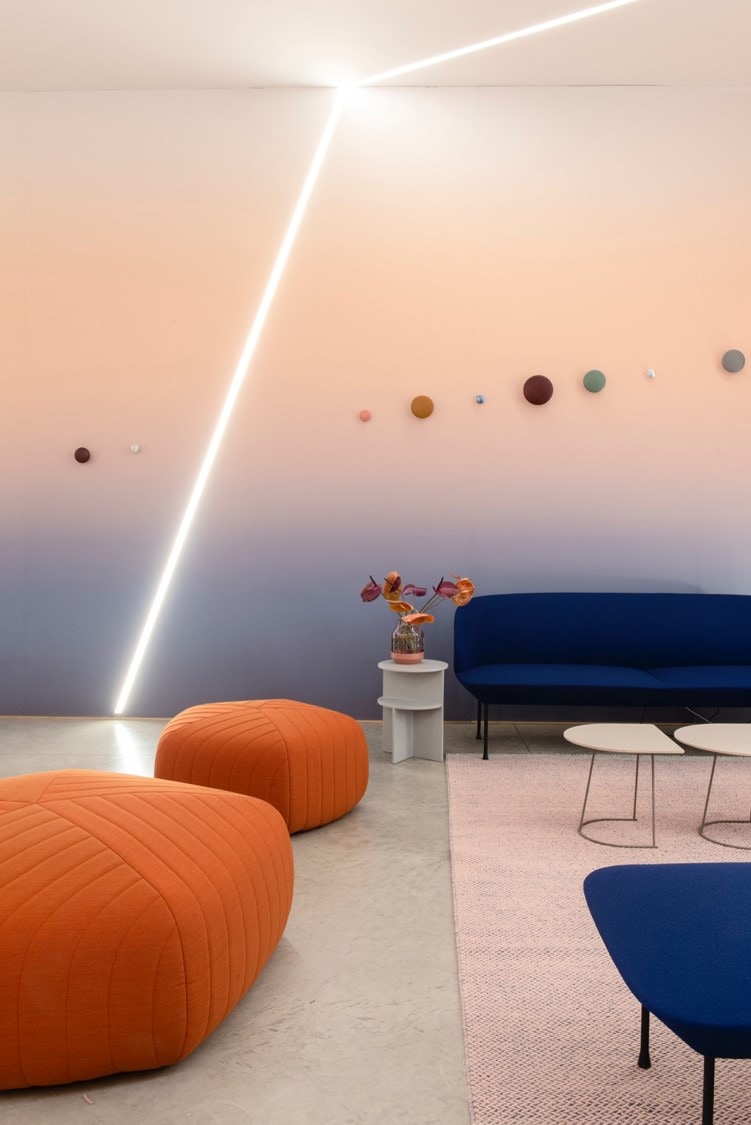
Many brands took a massive leap into the multi-sensory world this year, in which attendees were immersed in experiential environments with a simple aim— to create feeling. The exhibition, A Space for Being explored calmness and design’s impact on human biology. Visitors were told to put their phones and cameras away and just be. Equipped with biometric sensors, visitors were plunged sequentially into three different decorated rooms and were encouraged to explore, touch, and to soak in the environment around them. They were then met with experts, who explained which room evoked the strongest sense of calm. For many companies,the journey is the ultimate destination and the products are shifting to mere members of a choir in a far larger production. This signifies a momentous shift in brand experience. In an increasingly connected data-based world, people are seeking richer relationships in novel places and brands are taking note. In the future, people might not emphasize the elegant design of a product, but instead reflect on the emotions the company evokes or represents— the aroma, the taste, and the feelings created by a brand.
As our team looks back on this momentous week, we are inspired by the everlasting designs that continue to reinvent the industry as well as the groundbreaking ideals that now have a seat at the table.


